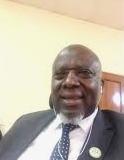Financial Resource Capacity Development Strategies and Public Secondary School Growth in Kira Municipality, Wakiso District, Uganda
DOI:
https://doi.org/10.53449/ije.v5i2.209Keywords:
capacity development, financial resource, public secondary schools, school growth, strategyAbstract
The study examined the relationship between financial resource capacity development strategies and public secondary school growth in Kira Municipality, Wakiso District, Uganda. It adopted a cross-sectional survey design with a mixed methods largely quantitative approach with a qualitative supplement. The population of head teachers was 03 while that of classroom teachers was 144. The sample size had three head teachers and 130 teachers. Head teachers were selected via census inquiry while teachers were subjected to simple random sampling. The head teachers were subjected to an interview guide while teachers were given a questionnaire. Validity of the instrument was through validation by experts, leading to a CVI of .814, while reliability was via a pre-test and obtained reliability coefficient was .84. Data analysis was done first descriptively in terms of frequencies, percentages and tables; and then through Pearson Product Moment correlation; while qualitative information was reported verbatim in areas that matter. Findings indicate that the correlation between financial capacity development strategies and school growth is positive, significant and strong (r = .637, N = 115, p = 0.000 <0.05). It was concluded that schools have engaged a transformation drive and thus put in a lot of strategies to enable financial capacity development although not all schools have been effective. The future becomes bright when such efforts are engaged. The general recommendation is that financial capacity development should be at the forefront of all school undertakings by having a clearly dedicated budget since it was found to have a strong influence on school growth. Further research is proposed on a purely qualitative study to elicit deep-rooted views and perspectives.
Downloads
References
Amin, M. E. (2005). Social science research: Conception methodology and analysis. Kampala: Makerere University Publishers.
Blackie, M., Blackie, R., Lele, U. & Beintema, N. (2010). Capacity development and investment in agricultural R&D in Africa. Lead background paper for ministerial conference on higher education in agriculture in Africa, Kampala, Uganda, 15-19. November 2010.
Morris, M. (2011). School improvement indicators: Education and early childhood development. New Brunswick School Improvement Service.
Canadian Council on Social Development (2003). Funding matters: The impact of Canada’s new funding regime on non‐profit and voluntary organizations.
Cislak, A., Formanowicz, M. & Saguy, T. (2018). Bias against research on gender bias. Scientometrics, 115(1), 189-200.
Claussen, C. (2012). Capacity building for financial management: A literature review
Cohen, J. (1988). Statistical power analysis for the behavioral sciences. New York: Routledge Academic.
De Vita, C J., Flemming, C., & Twombly, E. C. (2001). Building capacity in non‐profit organizations. C. J. De Vita., & C. Fleming (Eds). The Urban Institute. Retrieved from http://www.urban.org/uploadedpdf/building_capacity.pdf
Ellis, A. W. & Morrison, C. M. (1998). Real age of acquisition effects in lexical retrieval. Journal of Experimental Psychology; Learning, Memory and Cognition, 24(2), 515-523
Emery, D. (2004). 5 Key Indicators of School Performance. https://flippengroup.com/5-key-indicators-school-performance-2/
Gropella, E. (2006). Meeting the Challenges of Secondary Education in Latin America and East Asia: The World Bank. USA.
Hargreaves, H. D. (2011). System redesign for system capacity building. Journal of Educational Administration, 49(6), 185-700
Harris, A. (2001). Building the capacity for school improvement. Formerly School Organization, 21(3), 261-270 https://doi.org/10.1080/13632430120074419
Hinton, P. R., & McMurray, I. (2017). Presenting your data with SPSS explained. Taylor and Francis.
Hopkins, D. & Leask, M. (1989).Performance indicators and school development. School Organization, 9(1), 3-20. DOI: 10.1080/0260136890090101
Kempe, R. H. S. (2009). Capacity development for good governance in developing societies: lessons from the field. Development in Practice, 19(1), 79-86. DOI: 10.1080/09614520802576401
Kira Municipal Council Education Report (2019, 2021). Kira.
Kothari, C. R. (2006). Research methodology: Methods and techniques. Mumbai: New Age.
Krejcie, R. V., & Morgan, D. W. (1970). Determining sample size for research activities. Educational and Psychological Measurement, 30, 607-610.
Leku, B.V. (2013). Capacity development initiatives and their implications on employee performance in Moyo district local government – Uganda. Master’s Thesis; Human Resource Management. Uganda Management Institute. https://hdl.handle.net/20.500.12305/464
Nalubega, H. (2007). An assessment of the contribution of capacity building on improving staff performance in local governments in Luweero District – Uganda.
Namusisi, I. (2019). Capacity development and employee performance in insurance companies in Uganda: A case of UAP insurance Kampala. Published Master’s Thesis; Public Administration. Uganda Management Institute. https://hdl.handle.net/20.500.12305/936
National Endowment for the Arts (2011). Seven characteristics of financially healthy non‐ profits. Retrieved from www.nea.gov/resources
Onami, E.M. (2010). Financial resources and academic performance of students in secondary schools within Lari Division, Kiambu District, Kenya. Research Report for the Institute of Open and Distance Learning, Kampala International University.
Singh, D., Lample, M., Jones, M. &, Earnest, J. (2014) Capacity Building and Community Development: A Community Dialogue on Equality in Rural Uganda. In: Tiwari R., Lommerse M., Smith D. (Eds.) M² Models and Methodologies for Community Engagement. Springer, Singapore. https://doi.org/10.1007/978-981-4585-11-8_3
Teacher Development and Management System (1993, 2018). Training programme and the performance of head teachers in the management of public primary schools. TDMS.
The Wallace Foundation (2011). Stories from the field: fiscal fitness for non‐profits. Retrieved from www.wallacefoundation.org
UNDESA (2019). Capacity development for 2030 agenda implementation – Review of capacity development gaps, needs and priorities. The United Nations.https://www.kiramc.go.ug/kira-municipality-development-status-challenges-and-achievements
Wernerfelt, B (1984). A resource-based view of the firm. Strategic Management Journal. 5(2), 171-180.








